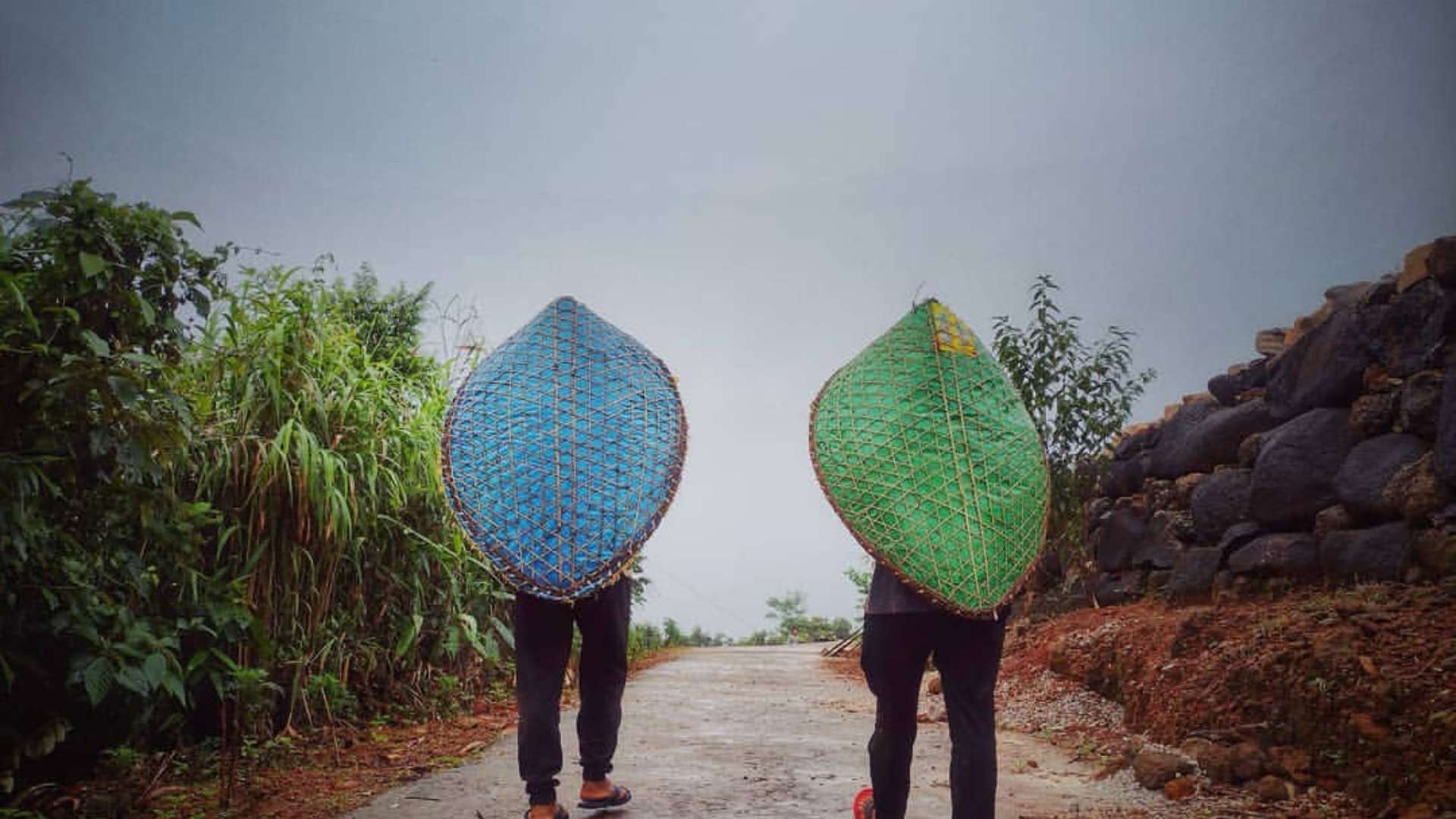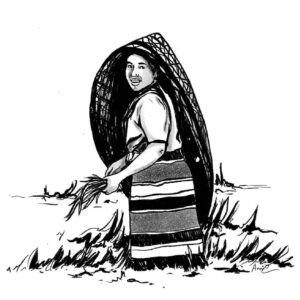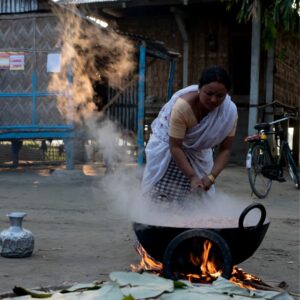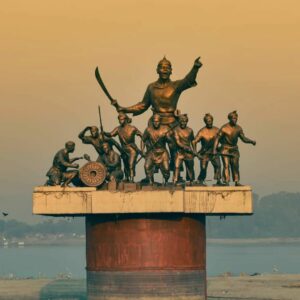This blog is a part of our Hand Crafted series where we talk about locally made products employing age-old skills and techniques with materials available from the environment.

Introduction
Meghalaya, home to the wettest place on the planet, is known for its breathtaking natural beauty – lush green hills, cascading waterfalls, and beautiful landscapes that are at their best during the monsoons. For the local inhabitants, this is their way of life and they have been have been living in harmony with nature and its abundant natural resources for centuries.
Communities such as the Khasis and Garos have been using locally available raw materials from their environment, such as bamboo and cane to make a variety of tools and equipment for their everyday needs. Bamboo, for instance, is used extensively for building homes, crafting musical instruments, and creating household and agricultural items such as baskets, mats, fishing traps and furniture.
One such tool used in this agriculture dominant society is the ‘knup’ (pronounced ka-noop), a Khasi rain shield that is an essential part of their daily lives, especially during monsoons. ‘Knup’ has been around for many decades and have survived because of its utilitarian purposes. The tool features in many traditional khasi agricultural folksongs as well as tales and legends.

Design and Construction
The knup is a shallow cone-shaped shield made from locally available resources that may differ from region to region within Meghalaya: for instance, in Mawsynram, a local variety of bamboo is used called ‘slew’. The palm leaves are first dried and shaped into the desired size and pattern by flattening under heavy objects. The reed bamboo strips are then woven in an open-hexagonal pattern and layered with two layers of palm leaves for waterproofing. The edges are sewn together with fine splits of bamboo and held together with bamboo pins.
When it is worn, the curved, conical part of this ‘inverted teardrop’ rain shield rests on the head and can be used completely hands-free. The elongated surface covers the back of the person upto his ankles, protecting the body from both heavy rains and the strong sun, when they are out in the paddy fields.
The process of making the ‘knup’ in Meghalaya
Usage and Benefits
The ‘knup’ is a practical solution for the farmers of Meghalaya who depend on the monsoon rains for their livelihood but also have to protect themselves from the sometimes torrential downpours that come with it. If you have taken a road trip in Meghalaya, especially during the monsoon months, you shall have definitely noticed men and womenfolk in roadside shops as well as the paddy fields wearing ‘knup’. The knup allows them to work freely on the steep hill slopes, the areas where terrace farming is common, without using their hands for extra work. The underlying bamboo weave runs from top to bottom, channeling shedding water downward and away, protecting not only the head but also the back of a person up to the knee or ankles.
The knup also comes in various sizes – a smaller knup that covers only the head is called ‘*knup rit*’ and it is also often used as home decoration.

Materials and Alternatives
Apart from palm leaves and bamboo, materials such as plastic sheets and broom grass are also used for waterproofing. Broom grass is first dipped in water, then flattened using wooden blocks and finally dried on rooftops. This process is believed to make the grass stronger and hence, likely to survive the rainstorms. In recent years, it is also common to see people layering their ‘knup’ with blue tarpaulin sheets to make the knup last for a longer period of time and at least for one monsoon season.
The ‘knup’ is often symbolically referred to, when measuring the intensity of monsoon seasons. A monsoon season of two to three knups is a good season for the crops. A season where over five knups were used is considered heavy rainfall, with downpours and landslides in the region.
Conclusion
The ‘knup’ is not only a practical tool but also a cultural symbol of Meghalaya. The people of this region have developed unique solutions to overcome the challenges of their rainy environment and the ‘knup’ is just one of the countless examples of their creativity and resourcefulness.
Sources:

Team ChaloHoppo
Anali Baruah writes on culture and tourism in north eastern regions of India. She is currently doing her PhD in Cultural Studies and works with Content & Research at ChaloHoppo.
OUR SET DEPARTURES
OUR SHORT ESCAPES
You may also like to read:



